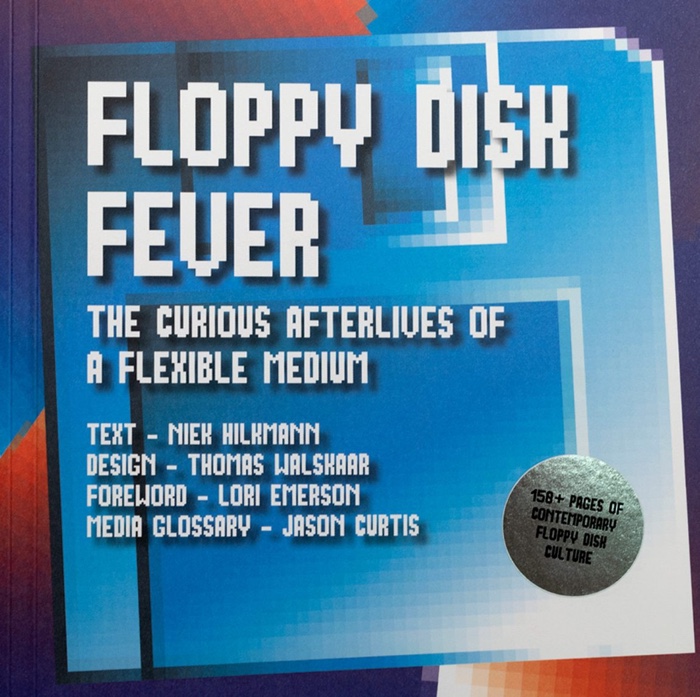Floppy Disk Fever. The Curious Afterlives of a Adaptable Medium explores the curious afterlives of the floppy disk in the 20-initially century by interviewing people included with the medium now. It was edited by artist, musician and researcher Niek Hilkmann and graphic designer and researcher Thomas Walskaar. Posted by Onomatopee.
Like lots of individuals, I had assumed that the practice of storing information inside of a little-ish beige or black plastic square was lengthy lifeless. I vaguely don’t forget a time when they have been glued to tech publications but which is about it. Floppy Disk Fever, on the other hand, demonstrates that the presence of the obsolete medium in modern lifestyle is ensured by a amazingly significant community of fanatics, amateurs, artists and academics.
The book opens with an essay about the potential hazards and effective possibilities of nostalgia. Its writer is Lori Emerson, an Affiliate Professor in the English Division and Director of the Intermedia Arts, Crafting, and Functionality System at the College of Colorado at Boulder as properly as the Founding Director of the Media Archaeology Lab. That is the past time you will read from a woman in Floppy Disk Fever. The editors of the e-book accept that floppy disk enthusiasts come from various backgrounds but that the wide bulk of them are adult males from Europe and the US. It was thus difficult to reflect the total spectrum of humanity in a publication committed to floppy fervour.
Even however there is a person-cave vibe in these interviews, they are not about nostalgia, retro kitsch and ageing geekery. They are also about the up to date environment and the dematerialisation of most of our interactions with computing.
Floppies waiting around to be shipped to shoppers of Floppydisk.com. Impression by means of Teknofilo
Niek Hilkmann, the key editor of the e-book, organises floppy-centred activities as part of the Floppy Totaal festival in Rotterdam. That is where he first obtained in get in touch with with several of the people interviewed in this ebook. They are museum founders, archivists, artists, lecturers and amateurs and Hilkmann will get them to chat about the modern use and imaginative repurposing of the object.
The 3 most intriguing interviews for me are the kinds with Tom Persky, Florian Cramer and Adam Frankiewicz.
Tom Persky, the founder of floppydisk.com, a business dedicated to marketing and recycling floppies, discusses the troubles of managing his organization in the 2020s. That is the place i learnt that some medical tools still involves floppies to operate.
Florian Cramer, a exploration professor at the Willem de Kooning Academy and Piet Zwart Institute, has been acquiring actions of severe compression in order to squeeze full videos on to the 1.44 MB of floppy disks since 2009. In the interview, he talks about his desire in doing the job with constraints and why his perform with floppies shatters the myth that electronic technologies is digital and dematerialised.
Adam Frankiewicz is a theatre director and digital new music composer who launched an independent history label Pionierska Information in 2014 which publishes music exclusively on floppy disks.
Other floppy fans include things like Clint Basinger who produces information with obsolete tech on the Lazy Recreation Review YouTube channel Nick Gentry who makes use of floppies and other out of date media as raw substance for artwork Foone Turing, a media collector and hacker who curated an exhibition on floppies at the Computer Historical past Museum in Fountain Perspective Jason Curtis, a writer, librarian and collector who founded the Museum of Obsolete Media in 2006 Bart van den Akker, the founder of the Home Pc Museum Jason Scott, archivist at Online Archive, filmmaker, performer and historian of tech.
They talk about their relationship with the demoscene and with retro society, the disappearance of bodily media, producing dollars from out of date tech, likely by the stress of combining previous and new tech, the enchantment of “failed” formats, the interplay about old and new, on-line and offline, media archaeology, their significance as cultural artefacts, etcetera.
Reading the interviews didn’t turn me into a floppy aficionado but i could see the place of longing for a time when you could manipulate know-how and see how it worked.
P.S.: I identified 2 words in the e book and seeking at them online sucked me into a vortex of interesting stories and anecdotes. The very first one is Sneakernet, the transfer of electronic information by physically relocating media (this kind of as floppy disks or USB flash drives) fairly than transmitting it in excess of a pc community. The next is skeuomorphs, a spinoff object that retains decorative design and style cues from their true-earth counterparts. The trash bin icon on your computer, for illustration.





